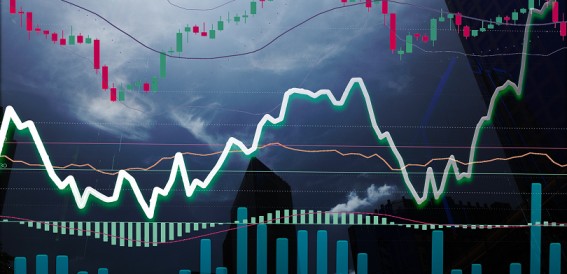Understanding the strategies and the concept of Long Call vs Short Call is essential in options trading. A Long Call involves buying a call option and anticipating asset price increases. In contrast, a Short Call option involves selling a call option, banking on price stagnation or decrease. These strategies differ in risk, profit potential, and market outlook, playing pivotal roles in traders’ portfolios. Distinguishing between Long Call’s bullish approach and Short Call’s bearish stance empowers investors to optimize their options trading strategies in diverse market conditions.
Topics Covered:
Long Calls
A Long Call is an options strategy where an investor purchases a call option contract, granting the right to buy an underlying asset at a predetermined price, known as the strike price, within a specified timeframe. This strategy is bullish, anticipating an increase in the asset’s price. The buyer pays a premium for this right but is not obligated to exercise the option if the market doesn’t move favourably.
The potential for profit in a Long Call option position is theoretically unlimited as the asset’s price rises above the strike price. However, if the market moves unfavourably, the risk is limited to the premium paid. Long Call options positions offer leverage, allowing investors to control the upside potential of a more substantial position with a smaller initial investment. This strategy is favoured when expecting significant price rises but carries the risk of losing the premium if the anticipated market movement doesn’t materialise.
Short Call
A Short Call is an options strategy where an investor sells a call option contract, obligating themselves to sell the underlying asset at a predetermined price (strike price) within a specified timeframe if the buyer exercises the option. This strategy is bearish, as it anticipates the underlying asset’s price to remain stagnant or decrease. The seller receives a premium for selling the call option but faces potentially unlimited losses if the asset price rises significantly beyond the strike price.
The maximum profit achievable is limited to the premium received. Short Call positions are suited for traders who believe the underlying asset’s price will not surge beyond the strike price before the option expires. It’s a strategy often used when expecting a neutral or slightly bearish market sentiment. However, it involves substantial risk due to unlimited potential losses if the market moves sharply against the anticipated direction.
Recommended Read: Demat Account Meaning
Long Call vs Short Call: Key Differences
-
Market Outlook
- Long Call: Bullish strategy, expecting the underlying asset’s price to rise significantly.
- Short Call: Bearish or neutral strategy, anticipating the underlying asset’s price to remain stagnant or decrease.
-
Position of the Investor
- Long Call: The investor is the buyer, holding the right to purchase the underlying asset at the strike price.
- Short Call: The investor is the seller, obligated to sell the underlying asset if the buyer exercises the option.
Recommended Read: How are NDF Priced?
-
Obligations
- Long Call: The holder has the choice to exercise the option but is not obligated to do so.
- Short Call: The writer (seller) is obligated to provide the underlying asset if the buyer exercises the option.
-
Profit Potential
- Long Call: Offers potentially unlimited profit if the asset’s price rises significantly above the strike price.
- Short Call: The maximum profit is limited to the premium received. Profit is achieved if the asset price remains below the strike price.
-
Risk Exposure
- Long Call: Limited risk, as the maximum loss is restricted to the premium paid for the option.
- Short Call: Carries potentially unlimited risk if the asset’s price surges sharply above the strike price, resulting in substantial losses.
-
Market Strategy
- Long Call: Employed when investors expect a substantial price increase in the underlying asset.
- Short Call: Used when investors anticipate a neutral or slightly bearish market sentiment or believe the asset’s price will not surge beyond the strike price.
-
Time Decay Impact
- Long Call: May be impacted by time decay, potentially losing value as expiration approaches.
- Short Call: Time decay works in favour of the seller. As time passes, the option’s value decreases, potentially leading to profit if the asset’s price remains below the strike price.
Key Summary
| Long Call | Short Call |
| Bullish strategy | Bearish or neutral strategy |
| Buyer’s position | Seller’s position |
| Potential unlimited profit | Limited profit to premium |
| Limited risk | Potentially unlimited risk |
| Used in bullish markets | Used in neutral or bearish markets |
Understanding the differences between Long Call and Short Call is essential for investors, as each strategy has distinct implications on risk exposure, profit potential, and market expectations. The choice between these strategies depends on the investor’s market outlook and risk tolerance.
Creating an online demat account opening with Religare Broking to effectively manage your long-call and short-call investments.
Conclusion
Understanding the concept of Long Call vs Short Call and the strategies is crucial in navigating options trading. Long Call positions signify a bullish outlook, aiming for substantial asset price increases, while Short strategies adopt a bearish or neutral stance, anticipating stagnation or declines. These strategies diverge in risk, profit potential, and market approach, serving as pivotal components in traders’ portfolios.
By discerning their differences, investors can tailor their options trading strategies to diverse market conditions, aligning with their risk appetite and market outlook. Making informed choices between these strategies enables traders to optimise their potential gains and effectively manage risks in the dynamic landscape of options trading.












